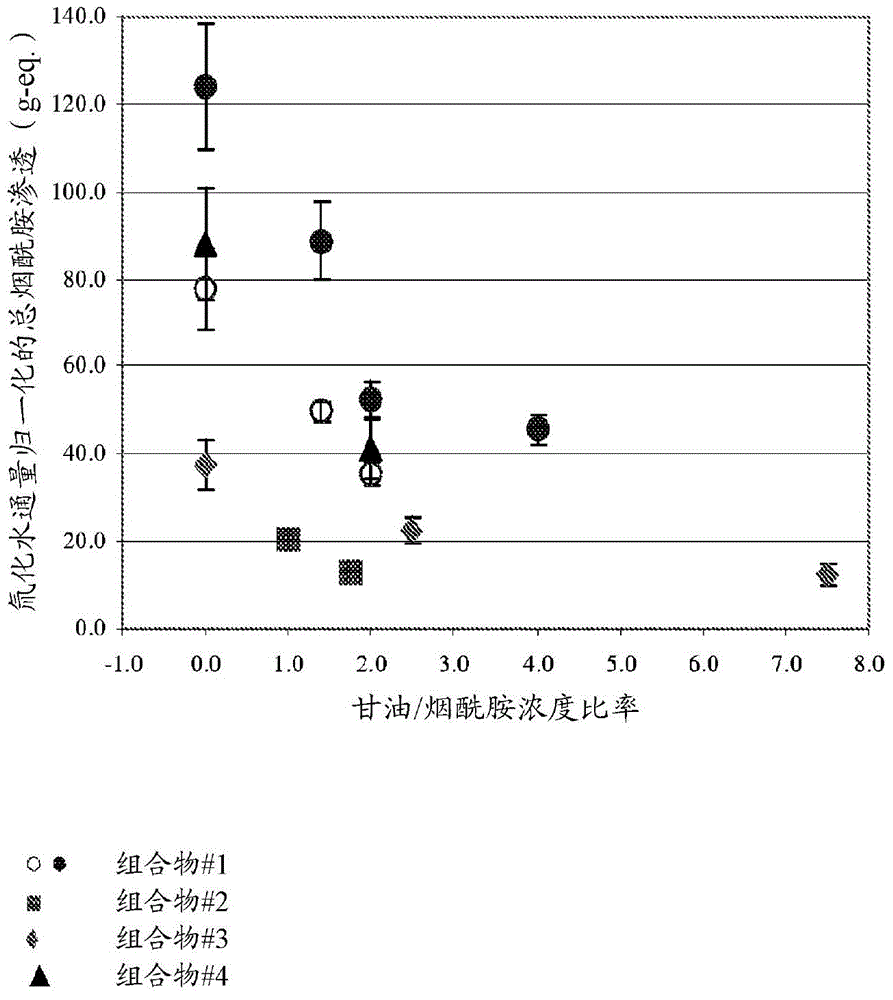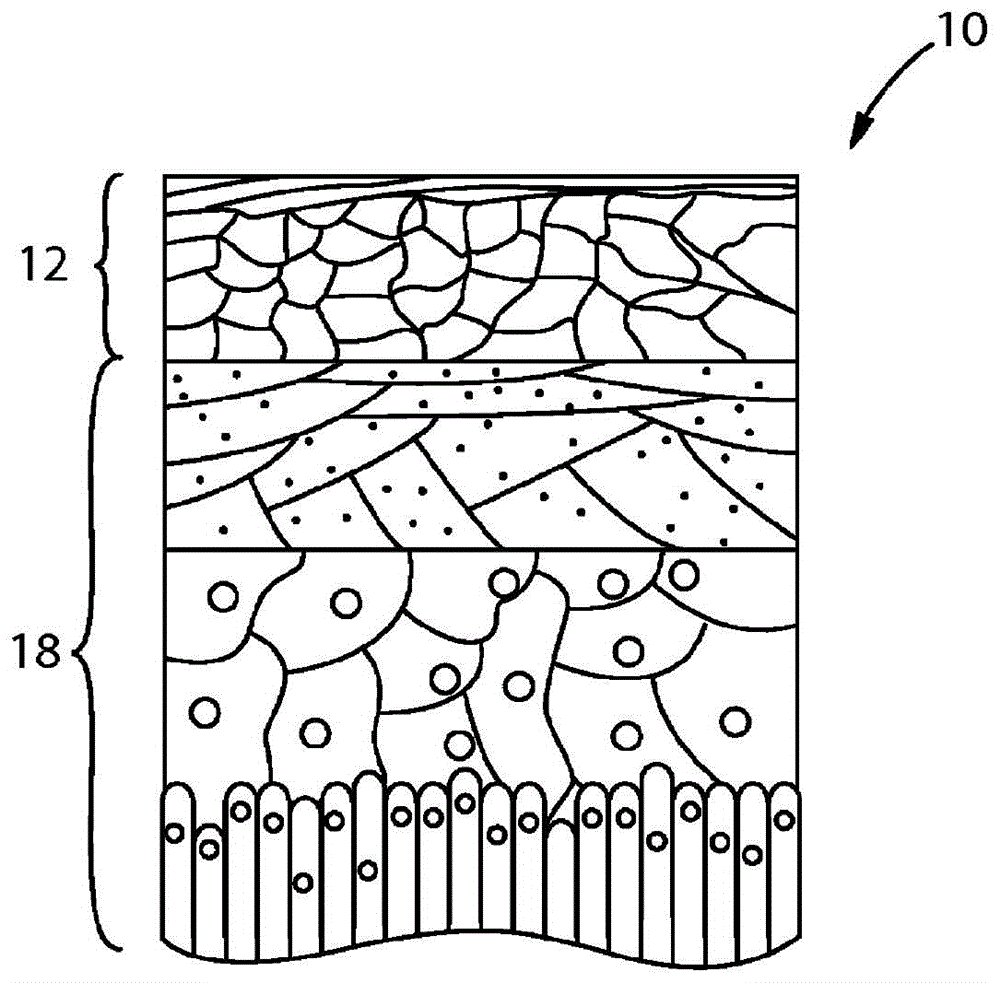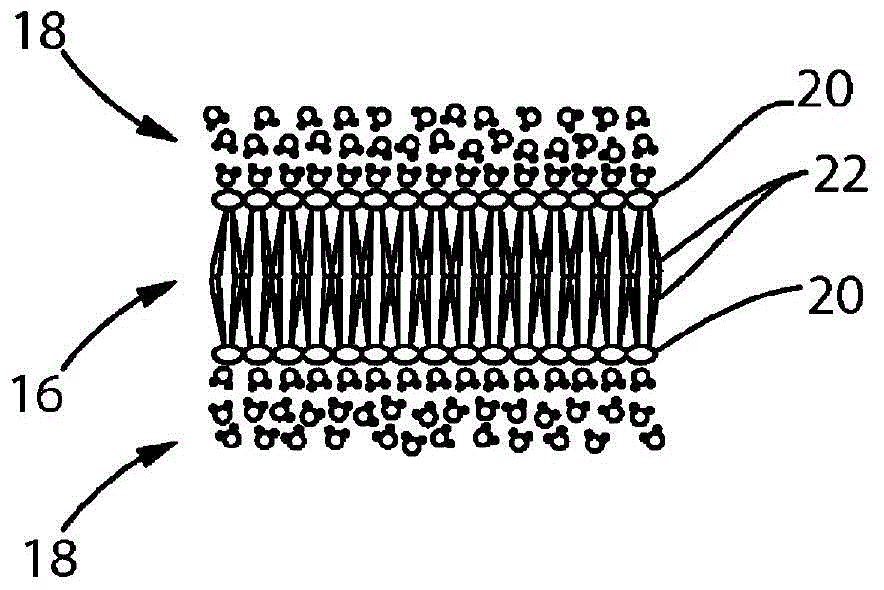Cosmetic compositions and methods providing enhanced penetration of skin care actives
A technology of cosmetic composition and compound, applied in the direction of cosmetics, cosmetic preparations, skin care preparations, etc., which can solve the problems that have not been well studied and difficult to choose penetration enhancers
- Summary
- Abstract
- Description
- Claims
- Application Information
AI Technical Summary
Problems solved by technology
Method used
Image
Examples
example 1
[0129] Example 1 - Nicotinamide / Glycerol Assay
[0130] An in vitro skin penetration study was performed to characterize the effect of glycerol on the in vitro skin penetration of radioisotope-labeled nicotinamide in several cosmetic compositions. The kinetics of in vitro skin penetration of radiolabeled nicotinamide was determined at fixed glycerol concentrations, and the effect of glycerol and nicotinamide product concentrations on skin penetration of radiolabeled nicotinamide and glycerol over 6 hours was determined. Table 9 provides a general description of the four cosmetic composition types tested. It should be noted that the individual products used in the study may have specific concentrations that differ slightly from the general values in Table 8. Additionally, Composition #1 was repeated in two different studies, varying the concentrations of nicotinamide and glycerol.
[0131] Table 8: General description of substrates used in in vitro skin penetration expe...
example 2
[0141] Example 2 - Niacinamide / Glycerol / Hexyldecanol Test
[0142] Cosmetic compositions as described in Table 8 were prepared.
[0143] Table 9
[0144]
[0145] The Phase A components are mixed together using a suitable mixer (eg model Tekmar RW20DZM) and paddle stirring while heating to about 50C. Continue mixing until all of the crosslinked polymer is visually uniformly dispersed. Add Phase B components to Phase A with continued mixing and allow Phase A to cool to room temperature. Add Phase C to Phase A / B with constant stirring. If desired, add the components of Phases D and E, then mill using a Tekmar T-25, and mill the product at about 8000 rpm for 5 minutes. Add Phase F to Phases A-E and mix using a suitable mixer for about 5 minutes.
[0146] Next, the human cadaver skin samples were fixed in a standard Franz-type diffusion cell (0.79 cm) maintained at about 37°C 2 surface area). Six replicates were prepared for each composition group. The receiver comp...
example 3
[0148] Example 3 - Niacinamide / Glycerin / Hexyldecanol / Diol Test
[0149] The cosmetic compositions shown in Table 10 were prepared in the same manner as described in Example 2 above.
[0150] Table 10
[0151]
[0152] Using generally the same test method as described in Example 2, the DPM for each compartment of each cell was blank corrected and summed to obtain the total recovered radiolabel value for a given cell. The DPM of each compartment was then normalized to the total recovered radiolabel value to obtain the "% recovered radiolabel" parameter for each compartment (separate receiver collections, epidermis, dermis and wipes for mass balance) . The cumulative receiver value for each collection time point is calculated as the sum of the individual collections up to that time point, where the total receiver value is calculated as the sum of all the individual collections. The total percent recovery value is the sum of the epidermal (including stratum corneum) and ...
PUM
 Login to View More
Login to View More Abstract
Description
Claims
Application Information
 Login to View More
Login to View More - R&D
- Intellectual Property
- Life Sciences
- Materials
- Tech Scout
- Unparalleled Data Quality
- Higher Quality Content
- 60% Fewer Hallucinations
Browse by: Latest US Patents, China's latest patents, Technical Efficacy Thesaurus, Application Domain, Technology Topic, Popular Technical Reports.
© 2025 PatSnap. All rights reserved.Legal|Privacy policy|Modern Slavery Act Transparency Statement|Sitemap|About US| Contact US: help@patsnap.com



